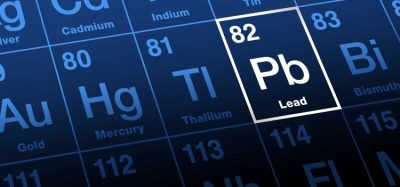Inhalable dry powder drug formulation could treat respiratory infections
Posted: 9 February 2024 | Catherine Eckford (European Pharmaceutical Review) | No comments yet
The drug formulation study offers promise for treating different respiratory tract infections using a single antimicrobial agent, a paper reports.


A paper published in the European Journal of Pharmaceutics and Biopharmaceutics has detailed the successful development of ebselen as an inhalable dry powder formulation. This is one of the most effective ways of treating respiratory infections, the authors asserted.
The approach, which uses a spray-drying technique, will allow inhalable antimicrobials as dry powder formulations to be developed”
The approach, which uses a spray-drying technique, will allow inhalable antimicrobials as dry powder formulations to be developed, according to Saha et al.
Ebselen is a synthetic organoselenium drug with antimicrobial, anti-inflammatory and antioxidant properties. The molecule was initially developed to treat noise induced hearing problems. However, the researchers demonstrated in the study that it has wider use potential.
In terms of formulation, currently ebselen is commercially available in oral dosage form (OSD) as a tablet. This is of note, as according to the authors, currently there is no commercially available inhalable dry powder formulation of ebselen. Therefore, there is innovation opportunity in this area.
While ebselen has shown promise in numerous respiratory infections including pneumonia, “a cost-effective and efficient delivery system for this drug is very limited”, the paper explained.
The ebselen inhalable dry powder formulation study
Key highlights
In the study, the researchers developed amino-acid-containing inhalable ebselen dry powder formulations. Amino acids leucine, methionine, and tryptophan were added to the ebselen.
The findings demonstrated that the amino acid-containing ebselen dry powders showed a better yield (37–56.4 percent) than the amino acid-free formulation (30.9 percent).
Tryptophan containing ebselen dry powder showed the highest yield at 56 percent.
Leucine-containing ebselen dry powder showed better aerosol performance than the amino acid-free ebselen dry powder. The leucine-containing ebselen dry powder showed the highest emitted dose (84 percent) and fine particle fraction (68 percent).
A potential drug formulation against Gram-negative and Gram-positive bacteria
All dry powder formulations showed potent antibacterial activity against the Gram-positive bacteria S. aureus and S. pneumoniae. Yet the data showed that greater concentrations were needed for the Gram-negative bacteria Pseudomonas aeruginosa and Klebsiella pneumoniae.
With ebselen’s efficacy against Gram-negative bacteria “less promising”, repurposing ebselen against respiratory bacterial pathogens, especially for gram positive bacteria, could be an alternative solution of new antibiotic development, the paper stated.
Conclusion
Saha et al. summarised that in the future, the approach “…could be used as an efficient way to treat different respiratory tract infections (eg, influenza, SARS-CoV-2, M. tuberculosis, etc.) using a single antimicrobial agent.”
Related topics
Drug Development, Formulation, Industry Insight, Research & Development (R&D), Respiratory Drug Delivery (RDD), Therapeutics
Related drugs
Related diseases & conditions
Influenza, Respiratory diseases, respiratory infection, SARS-CoV-2, Tuberculosis









